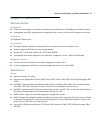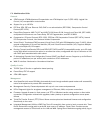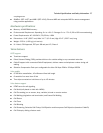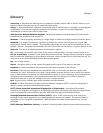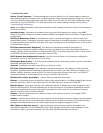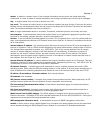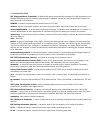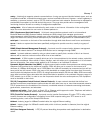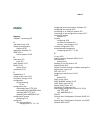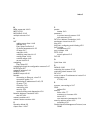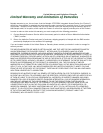Glossary 5
router: A device that supports network communications. A router can connect identical network types, such as
LocalTalk-to-LocalTalk, or dissimilar network types, such as LocalTalk-to-Ethernet. However—unless a gateway is
available—a common protocol, such as TCP/IP, must be used over both networks. Routers may be equipped to
provide WAN line support to the LAN devices they serve. They may also provide various management and
monitoring functions as well as a variety of configuration capabilities.
routing table: A list of networks maintained by each router on an internet. Information in the routing table
helps the router determine the next router to forward packets to.
SDLC (Synchronous Data Link Control): A link-level communications protocol used in an International
Business Machines (IBM) Systems Network Architecture (SNA) network that manages synchronous,
code-transparent, serial information transfer over a link connection. SDLC is a subset of the more generic HDLC
(High-Level Data Link Control) protocol developed by the International Organization for Standardization (ISO).
serial port: A connector on the back of the workstation through which data flows to and from a serial device.
server: A device or system that has been specifically configured to provide a service, usually to a group of
clients.
SNMP (Simple Network Management Protocol): A protocol used for communication between management
consoles and network devices. The Netopia ISDN Router can be managed through SNMP.
subnet: A network address created by using a subnet mask to specify that a number of bits in an internet
address will be used as a subnet number rather than a host address.
subnet mask: A 32-bit number to specify which part of an internet address is the network number, and which
part is the host address. When written in binary notation, each bit written as 1 corresponds to 1 bit of network
address information. One subnet mask applies to all IP devices on an individual IP network.
Symmetric Digital Subscriber Line (SDSL): A digital communication medium that operates over existing analog
telephone lines provided by the telephone company. SDSL will allow you to connect to the Internet at a
minimum of 128Kbps bi-directional, up to 2.320 Mbps. Your LAN will constantly be connected and you will not
have to dial into the Internet. SDSL uses more of the bandwidth on copper phone lines than what is currently
used for plain old telephone service (POTS). By using frequencies between 26 kHz and 1MHz, SDSL can encode
more data to achieve higher data rates than would otherwise be possible in the restricted frequency range of a
POTS network (up to 4 kHz). In order to use the frequencies above the voice audio spectrum, DSL equipment
must be installed on both ends.
TCP/IP (Transmission Control Protocol/Internet Protocol): An open network standard that defines how
devices from different manufacturers communicate with each other over one or more interconnected networks.
TCP/IP protocols are the foundation of the Internet, a worldwide network of networks connecting businesses,
governments, researchers, and educators.
telephone wall cable: 2-pair, 4-pair, or 8-pair, 22- or 24-gauge solid copper wire cable. Telephone wall cable is
sometimes called telephone station cable or twisted-pair cable.
TFTP (Trivial File Transfer Protocol): A protocol used to transfer files between IP nodes. TFTP is often used to
transfer firmware and configuration information from a UNIX computer acting as a TFTP server to an IP
networking device, such as the Netopia ISDN Router.
thicknet: Industry jargon for 10Base5 coaxial cable, the original Ethernet cabling.
thinnet: Industry jargon for 10Base2 coaxial cable, which is thinner (smaller in diameter) than the original
Ethernet cabling.
UDP (User Datagram Protocol): A TCP/IP protocol describing how packets reach applications in destination
nodes.



